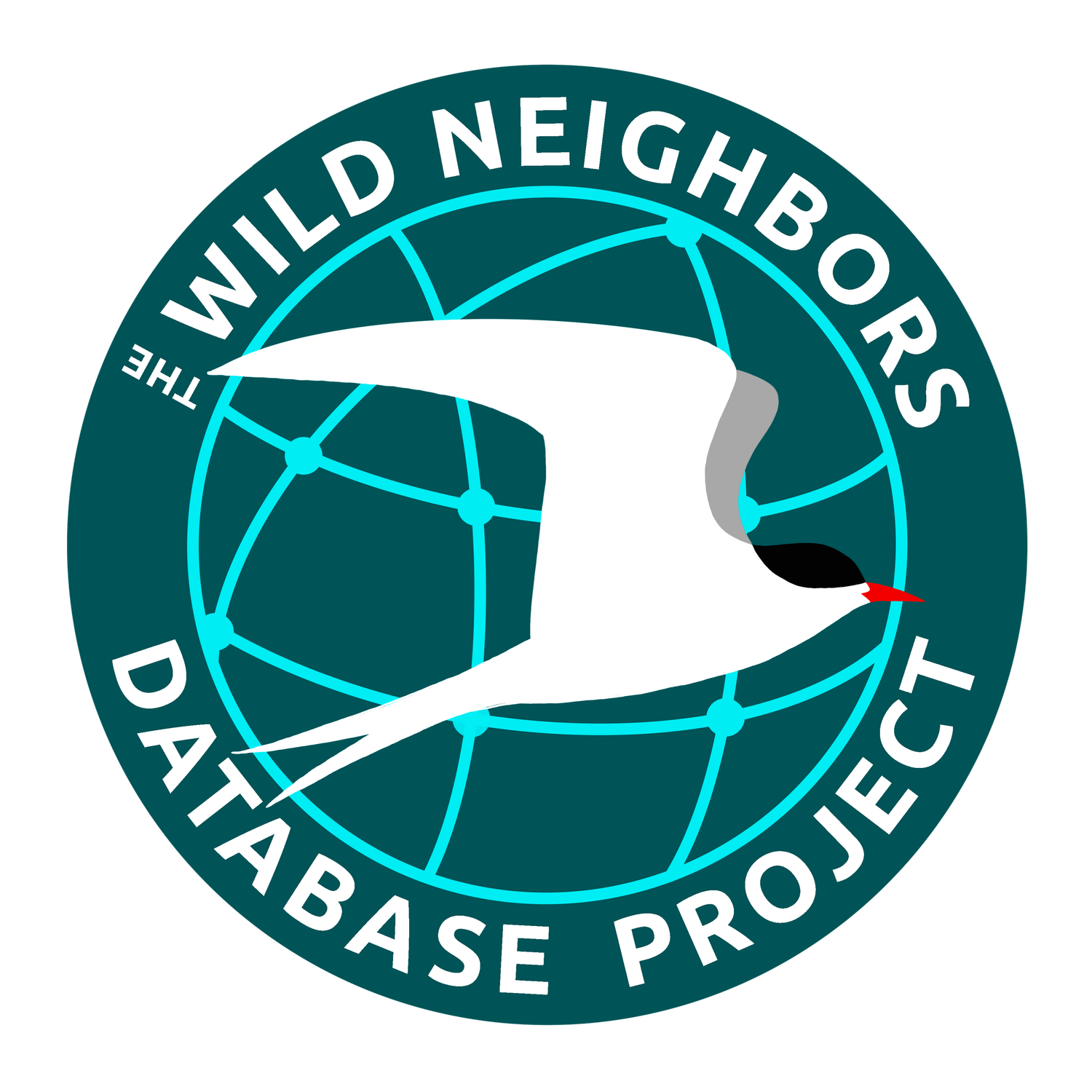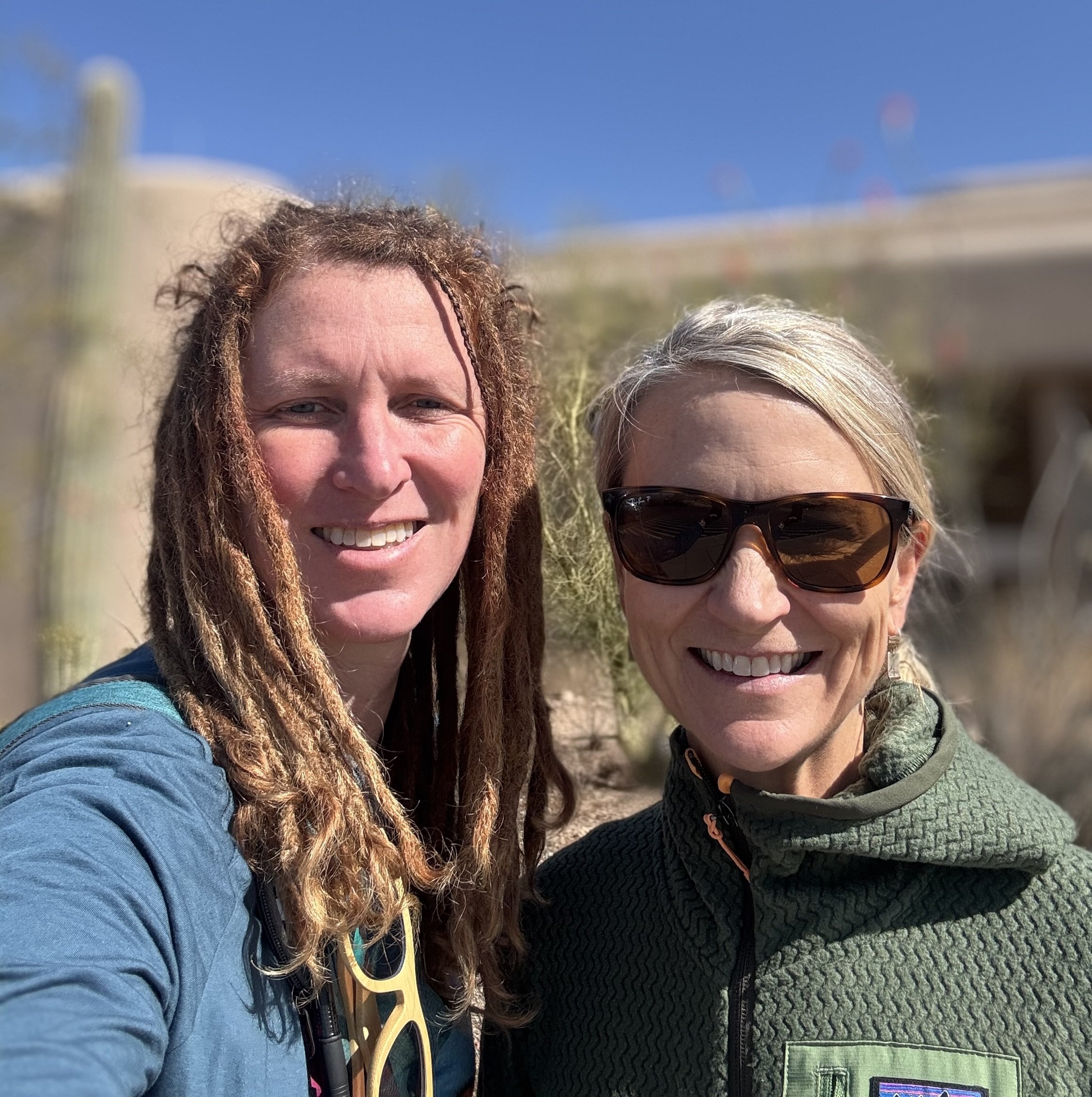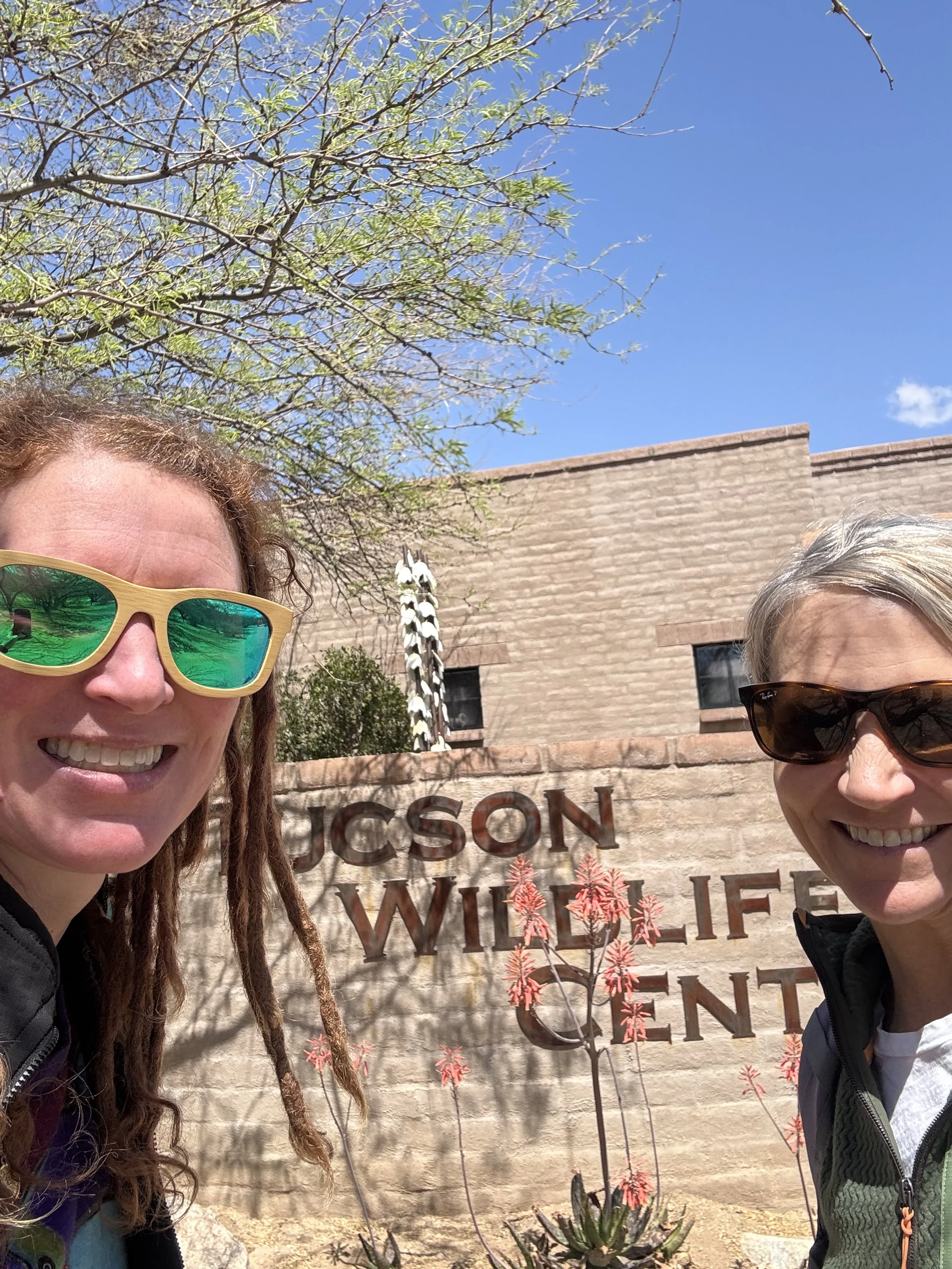A WildAlert Road Trip
Rachel Avilla and Terra Kelly on their Arizona road trip.
The goal of this trip was to strengthen wildlife data for wildlife health monitoring in Arizona.
In early April, our co-founder and president, Rachel Avilla, traveled through Arizona with Terra Kelly, a WNDP board member and close colleague. The purpose of the trip was to connect with wildlife rehabilitation organizations and the Arizona Game and Fish Department (AZGFD).
With the WildAlert project now active in this state, the trip was a valuable opportunity to strengthen partnerships, onboard new users to the Wildlife Rehabilitation Medical Database (WRMD), and support current users in enhancing their data collection. Improving data collection improves statewide wildlife health monitoring.
Building Stronger Connections
They kicked off their journey on Thursday, April 3, at AZGFD, where they met with Drs. Ann Justice Allen DVM, MS and Ann Fan, DVM, MS. AZGFD has been instrumental in supporting WildAlert’s launch in Arizona. Discussions focused on integrating AZGFD morbidity and mortality data into WildAlert to complement clinical data from wildlife rehabilitation organizations, with the goal of creating a more comprehensive system for monitoring wildlife health across the state.
Later that afternoon, they visited two very different and equally inspiring organizations.
The first stop was Arizona Bat Rescue in Mesa. Arizona Bat Rescue is relatively new to WRMD. Director Hally’s passion for bats is unmistakable, both in conversation and in the way she has thoughtfully decorated the facility itself with bat-themed touches that reflect their mission. Since the visit, Hally has remained incredibly engaged, asking insightful questions and demonstrating a deep commitment in using WRMD to track information on bat rehabilitation.
Terra Kelly and Rachel Avilla visiting Arizona Bat Rescue
From there, they made their way to Southwest Wildlife Conservation Center, where they met with Raandi their Executive Director, and Kris one of their Animal Care Specialist. This organization plays a key role in Arizona’s mammalian wildlife rescue and rehabilitation. They also play an active role in Arizona’s conservation by assisting AZGFD with Mexican gray wolf recovery efforts. Their deep involvement in species recovery programs shows how wildlife rehab centers can serve as long-term partners in conservation, not just emergency care providers.
The next day, they stopped by Liberty Wildlife in Phoenix, where they met with Alex, Daily Care Manager, Intake Manager and Volunteer Manager, a dedicated wildlife rehabilitator and educator. Liberty Wildlife is a high-volume, highly professional center. Among their many contributions, their Research and Conservation team is a group of Liberty Wildlife biologists who work together to help mitigate wildlife issues, such as birds on electric poles, burrowing owls living in construction zones and other wildlife situations. Liberty Wildlife also manages one of the only Non-Eagle Feather Repositories providing a source of legal feathers for nationally recognized tribal members for their cultural and religious ceremonies.
That afternoon, they visited Wild at Heart in Cave Creek, AZ where Eric, one of their staff wildlife rehabilitators, shared highlights of their organization’s broader conservation initiatives. In addition to raptor rehabilitation, they play a key role in breeding the threatened Cactus Ferruginous Pygmy-Owls for reintroduction, and relocating burrowing owls displaced by large-scale development projects, such as solar farms. Their work exemplifies how rehabilitation can intersect with long-term conservation and habitat management.
Over the weekend, they continued southeast to Tucson Wildlife Center, where they met with director Buffie and Shawn, one of their licensed wildlife rehabilitators. Tucson Wildlife is a critical resource for Southern Arizona, and it was great to hear about their interest in integrating WRMD into their day-to-day operations and explore ways to make data collection even more effective for both patient care and statewide monitoring.
Rachel Avilla and Terra Kelly visiting Tucson Wildlife Center
Finally, on Monday, they visited Vida Wildlife and met with Albert. Vida is another organization using WRMD, and it was valuable to hear firsthand about their workflow, challenges, and ideas for how they could contribute to and benefit from WildAlert’s statewide insights.
Key Takeaways
Every organization we visited plays a unique role in Arizona’s wildlife landscape, from bat rescue and owl conservation to wolf recovery. And yet, they all share a common thread, a commitment to high-quality wildlife care and a growing interest in how their data can contribute to broader conservation and health initiatives. This trip reinforced how crucial it is to support the people behind the data. When we offer tools like WRMD and systems like WildAlert, we’re not just collecting numbers—we’re helping frontline wildlife stewards track patterns, work together as a coordinated network with a shared purpose, and ultimately protect more species.
We’re incredibly grateful to everyone who welcomed us and shared their time. Arizona’s wildlife rehabilitators are doing exceptional work, and we’re proud to be part of the effort to support it.



